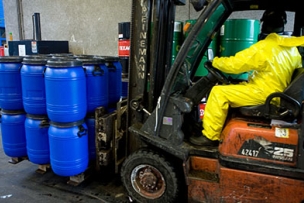What Is an Emergency Action Plan?
“OSHA’s emergency action plan (EAP) regulation (29 CFR 1910.38) requires reporting and evacuation procedures for all perceived emergency situations,” says Brandon Hody, a safety and occupational health professional at Concurrent Technologies Corp. (CTC). “Any emergency preparedness specifically regarding hurricanes should be incorporated into your organization’s written EAP.”
In addition to the emergency action plan, OSHA provides guidance to employers on preparing for and responding to hurricanes, but this is not to be confused with specific legal requirements, according to Hody.
Among other things, an EAP must include:
- Procedures for emergency evacuation, including type of evacuation and exit route assignments
- Procedures to be followed by employees who remain to operate critical plant operations before they evacuate
- Procedures to account for all employees after evacuation
- Procedures to be followed by employees performing rescue or medical duties
- An employee alarm system with a distinctive signal for each purpose
- Training of employees to assist in a safe and orderly evacuation
- Review of the emergency action plan with each employee covered by the plan
Why Hurricane Preparedness Means Preparing for the Worst
The National Safety Council provides programs to help employers plan for emergencies and train their employees in emergency procedures, including evacuation or sheltering in place during hurricanes.
“The employer should know the evacuation routes for the county and state, which are going to be freed and cleared before other routes,” says John Vasquez, a safety consultant at NSC. “Stay in communication with emergency authorities to keep on top of any backup of traffic or debris on the road that could block it.”
Vasquez says that employers should also be aware of emergency evacuation assistance programs in their county and should be familiar with the location of emergency shelters nearby in case their building has been flooded and their employees need to go somewhere safe.
Downed trees or flooded roads may prevent the arrival of local emergency assistance, such as police, fire and ambulance, he says, so it’s a good idea to have one or more employees trained in first aid/CPR, in the event that people are injured due to broken windows and flying debris.
There’s more to know about planning beyond emergencies, including business continuity. Learn all about it in “Will Your Manufacturing Facility Be Ready if a Disaster Strikes?”
Tropical Storm and Hurricane Preparedness Tips
“In a manufacturing facility, such as a metal shop, you need managers who can initiate a shutdown ahead of time before the storm actually hits so there won’t be any damage to the equipment, because you can’t just hit an off switch,” Vasquez says.
“All managers at the plant should know where the utility shut-offs are for the electrical, water and gas supplies in the event of an emergency, and there has to be a method for shutting everything down in a safe manner and still having time to get people to a sheltered area,” he says.
In your plan, be sure to include a system for backing up critical information on a server, including customer orders, billing information, payroll and everything else needed for the business, explains Vasquez.
“Rather than having employees stay at work during that time, they may want a plan that allows employees to work from home, so that they don’t have to be responsible for as many people at the workplace that normally would be there on a business day, ” he says.



